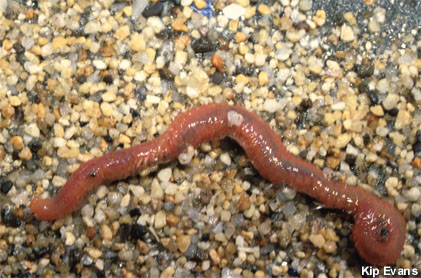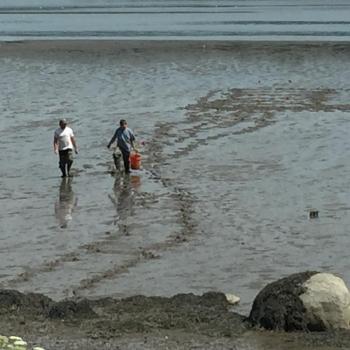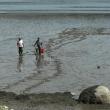Study seeks data on bloodworm growth, survival
 James Arsenault and William Locke return from seeding a bed with young bloodworms in Wiscasset. GINA HAMILTON/Wiscasset Newspaper
James Arsenault and William Locke return from seeding a bed with young bloodworms in Wiscasset. GINA HAMILTON/Wiscasset Newspaper
 Bloodworm in sanctuary bed, courtesy Kip Evans, of National Oceanographic and Atmospheric Administration
Bloodworm in sanctuary bed, courtesy Kip Evans, of National Oceanographic and Atmospheric Administration
 James Arsenault and William Locke return from seeding a bed with young bloodworms in Wiscasset. GINA HAMILTON/Wiscasset Newspaper
James Arsenault and William Locke return from seeding a bed with young bloodworms in Wiscasset. GINA HAMILTON/Wiscasset Newspaper
 Bloodworm in sanctuary bed, courtesy Kip Evans, of National Oceanographic and Atmospheric Administration
Bloodworm in sanctuary bed, courtesy Kip Evans, of National Oceanographic and Atmospheric Administration
Bloodworms are a major fishery in Maine. According to the Department of Marine Resources, in 2015, almost 400,000 pounds of the worms were landed, with a value of more than $6.2 million in the state.
Bloodworm harvesting has been declining since 2001, but the value of the fishery has increased dramatically during the same period, from less than $5 per pound in 2000 to $15.60 today. Bloodworms are used almost exclusively for fish bait; another marine worm harvested, often in the same beds, the sandworm, is sometimes used for commercial fish food.
Despite the importance of the fishery, few studies have been done on the lives of the marine worms. Now, a study is under way in Wiscasset’s flats on the tidal Sheepscot River, between the water treatment plant and the stone jetty, to try to shed some light on the creature’s life cycle.
William Locke, research associate in Marine Biology at Bates College, is spearheading the study. A small patch of the flat has been marked with red and blue flags, alerting clammers and wormers to the study. The Department of Marine Resources is funding the study out of license sales to worm diggers.
“This is an important study, because all research done to date has been inconclusive,” Locke said. “The study involves small worms, that have been inserted with a small metal marker. The tag will identify them as part of the study. They’ve been weighed. In a month, we’ll come out and collect as many as we can and find out how much they’ve grown.”
Little is known about the bloodworms’ lives. They are polychaetes, or bristle worms.They are segmented, like earthworms, but have little appendages at their sides to move through mud and water. Bloodworms are at the top of the benthic community’s food chain, and eat many smaller creatures, including other worms. They can grow up to six feet in length.
Beyond that, not much is known about the worms. It is not known how long it takes for them to grow to a marketable size, nor how long they live in the wild. Without many predators (even green crabs didn’t appear to predate on bloodworms), it is not clear how their populations are being limited, although there are some guesses, Locke said. “Temperature and salinity appear to be factors, although we aren’t certain how it works,” he said. “We are fairly certain that harvesting isn’t playing a major role.”
That’s because one of the few studies done on bloodworms involved harvest efficiency, said James Arsenault, vice president of the Independent Maine Marine Worms Harvesters Association. “Harvesting by hand didn’t seem to have an impact,” he said. Marine worms are typically harvested with a rake-like tool, with the worms collected in a basket. “Deep dragging of the beds might have had an impact, but that’s not done a lot.”
In the study, tagged worms were placed in a bed and allowed to be collected by harvesters. “They didn’t get them all, not even close,” Locke said. “There were still plenty of the tagged worms in the study bed.”
The test bed has been seeded with young worms, and Locke and Arsenault asked that the bed not be disturbed for the life of the study, expected to be about a month.
“We are hopeful that this study will give us more data on the lives of these creatures,” Locke said. “But there’s a wide variation in bloodworms’ size and color and other physical factors, so this may be just the beginning.”
Event Date
Address
United States




































